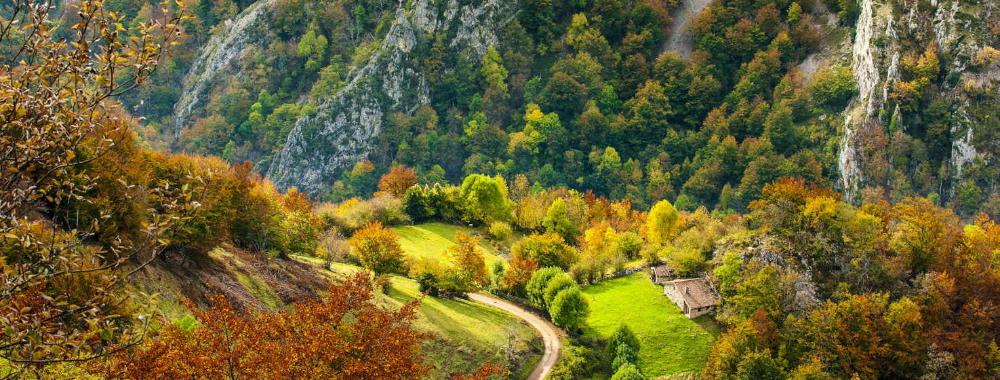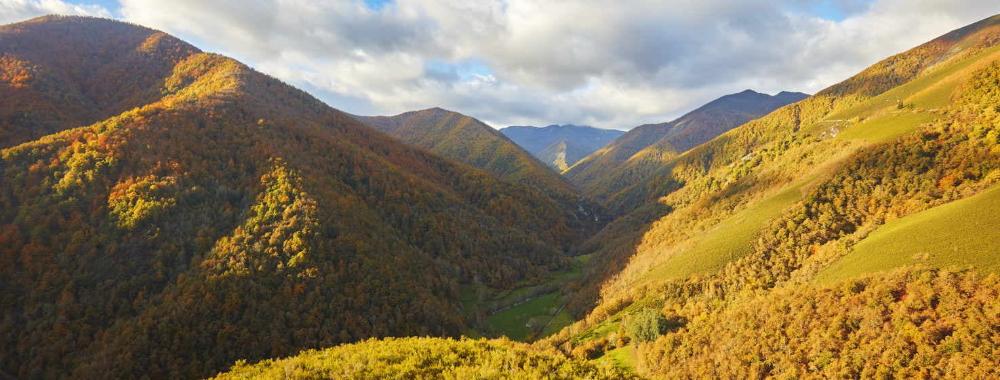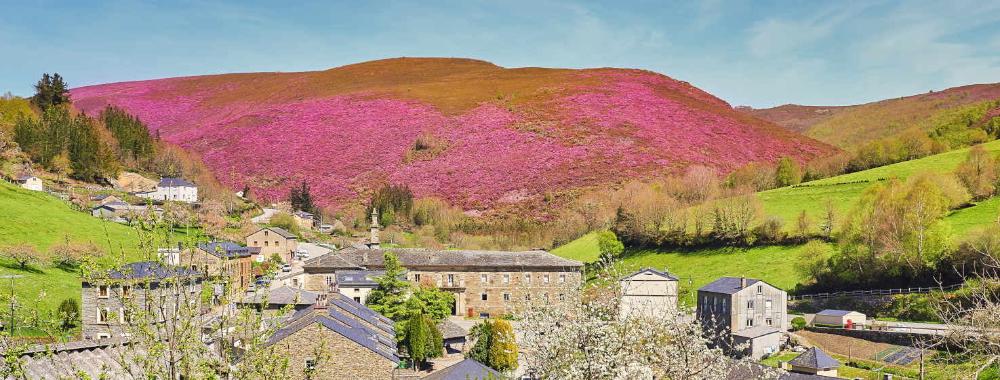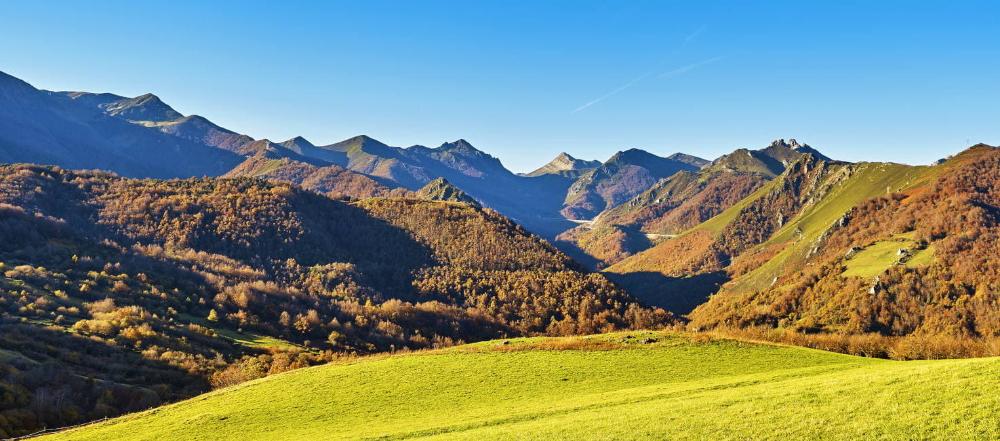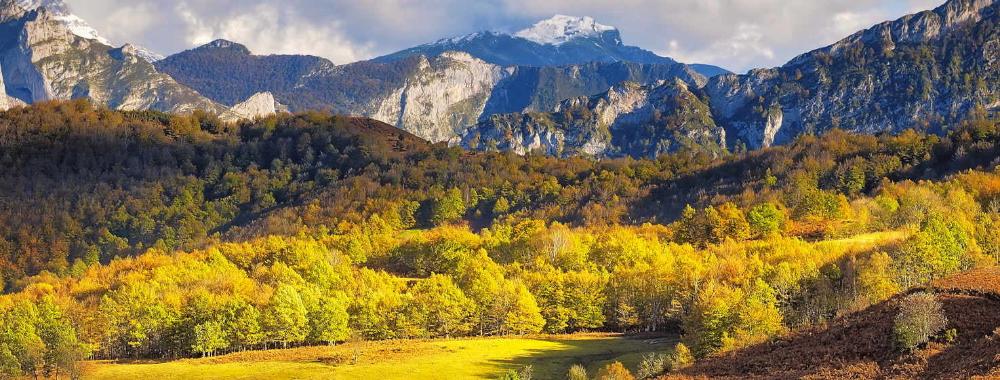Asturias accounts for almost 1% of all the Biosphere Reserves on the planet. This proportion is so significant that it is not surprising that Asturias represents the Natural Paradise par excellence, with a remarkable number of natural parks and a national park.
/documents/39908/67830/lagos-covadonga.jpg/ded8ae73-664e-ef86-9c68-c3c889864376?t=1674197360642
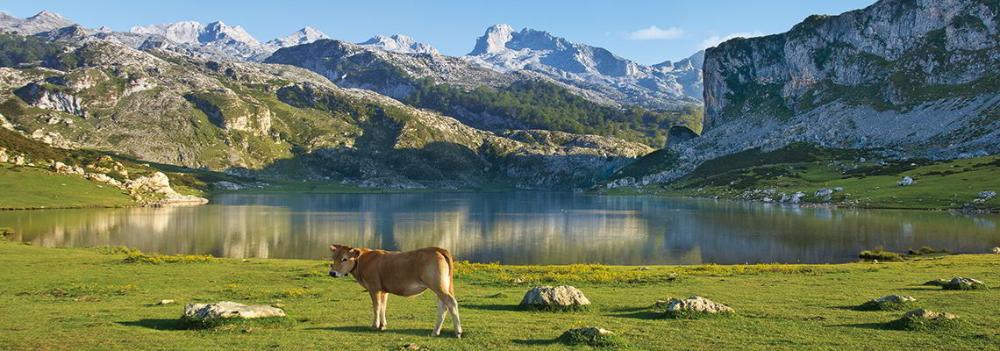
Mountains and valleys, high peaks, rivers and streams, waterfalls, forests, canals, springs, grottoes, coast and beaches, cliffs, villages and towns... Landscape and landscape take on a thousand forms in Asturias, and all are a vivid expression of a territory that loves its nature, cares for it as a treasure and is aware of the immense cultural and environmental value that such wealth signifies.
Asturias is the single-province Autonomous Community with the most Biosphere Reserves in Spain: seven.
What is a Biosphere Reserve?
Biosphere reserves are areas designated and managed with the aim of promoting biodiversity conservation and sustainable development. These reserves are internationally recognised and are part of the Man and the Biosphere (MAB) Programme of UNESCO (United Nations Educational, Scientific and Cultural Organisation).
Biosphere reserves have three interconnected zones:
- Core zone: This area is intended for the strict protection of ecosystems and the conservation of biodiversity. Exploitation of natural resources and any activity that may alter the ecological balance is prohibited.
- Buffer zone: Surrounding the core zone is a buffer zone that acts as a transition area between strict protection and sustainable use of resources. Controlled activities that do not jeopardise the integrity of the ecosystem are allowed here.
- Sustainable development zone: This is the part of the reserve where the economic and social development of the local communities is promoted, but always in harmony with the conservation of nature and biodiversity.
The main objective of a biosphere reserve is to achieve a balance between biodiversity conservation, sustainable development and the well-being of local communities. These sites function as living laboratories for scientific research, environmental education and the promotion of sustainable practices.
It is important to note that each biosphere reserve is unique and is adapted to the specific characteristics of its environment, considering factors such as geography, flora and fauna, as well as the human activities present in the region.
What are the Biosphere Reserves of Asturias?
A detailed tour of the 7 Biosphere Reserves of Asturias is a journey in constant communion with nature that is always refreshing, healthy and rewarding.
The Picos de Europa National Park, the Somiedo Nature Reserve, the Redes Nature Reserve, the Fuentes del Narcea, Degaña and Ibias Nature Reserve, the Río Eo, Oscos and Terras de Burón Biosphere Reserve, the Ubiñas-La Mesa Nature Reserve, and the Ponga Nature Reserve are the seven areas that make up the network of Biosphere Reserves in the Principality of Asturias.
Picos de Europa National Park
It was the first in Spain and one of the first in the world, when it was declared a National Park of the Covadonga Mountains in 1918. It is also one of the largest and most visited in Spain. It is home to the founding landmark of the Kingdom of Asturias, Cuadonga/Covadonga. And also world climbing landmarks such as the Picu Urriellu, also known as Naranjo de Bulnes, and the Torrecerredo, which at 2,648 metres is considered to be the roof of the Cantabrian Mountains. It is also the birthplace of such internationally famous cheeses as Cabrales and Gamonéu.
/documents/39908/67830/picos-europa.jpg/f2d63fc2-d553-604f-ce85-04f50db75f88?t=1674197362592

Peñamellera Peak from the Alevia viewpoint (Peñamellera Baja)
Somiedo Natural Park
It is well known for its "brañas" and its lakes. It was precisely the differences in altitude in this area that favoured transhumance agriculture and stockbreeding, in which rural men and women rotated crops and pastures from the villages in winter to the high mountains in summer, and this is how the brañas, with their teito huts and stone walls, came into being for mankind. In these brañas in the high areas, the vaqueiros de alzada (a transhumant ethnic and cultural group) spent the summer with their livestock. Somiedo has well-known brañas, such as La Pornacal, and emblematic lakes, such as Lago del Valle. Precisely these two routes are key to discovering the essence of the Somiedo Natural Park.
/documents/39908/67830/somiedo.jpg/4a0ded40-c872-b5ce-ed38-d383b4ea130c?t=1674197365167
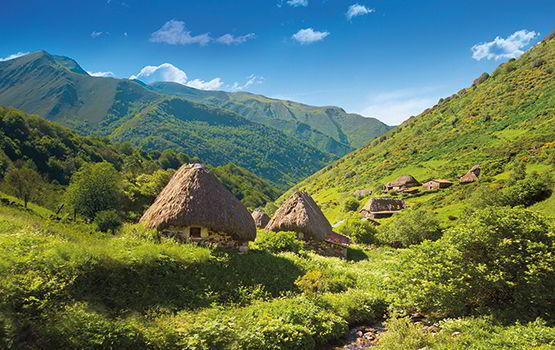
La Pornacal (Somiedo).
Redes Natural Park
It is the reservoir of the reservoirs that supply drinking water to a large part of Asturias. It is also the site of an emblematic waterfall - El Tabayón del Mongallu - and where one of the oldest cheeses in Asturias is made: Casín, which has a P.D.O. And of course the place of such well-known landscapes as the beautiful Brañagallones braña, the forest of Redes or Lake Ubales. It is also home to beautiful villages and typical routes such as the Alba route, which starts and ends in Soto. A land of wood craftsmen, the area's "madreñeros" are well known. It is precisely for this reason that the Museo de la Madera y la Madreña is located in Caso, as well as the Museo del Agua in Sobrescobio.
/documents/39908/67830/redes.jpg/f2f91f0b-9118-0970-6429-64fe67a02ee8?t=1674197363819
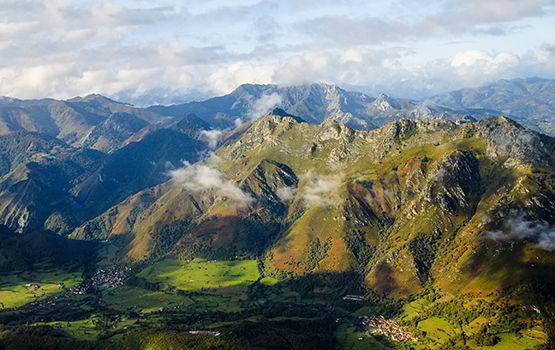
Soto (Sobrescobio).
Fuentes del Narcea, Degaña and Ibias Nature Reserve
It is home to the Muniellos forest, the largest oak forest in Europe. However, Muniellos being the flagship, the rest of the Reserve is also spectacular with its pronounced reliefs, with its wooded patches, and with the basins of the rivers Narcea and Ibias drawing landscapes of deep valleys and high mountains. An area of wine production, of cortinos (constructions to protect the beehives of the brown bear) and corripas (constructions for storing chestnuts), of cunqueiros, and the territory of the brown bear, this Park is a unique space, with a marked personality.
/documents/39908/67830/ibias.jpg/c9fc7511-c629-f2c6-c49b-bc7894e9ea1e?t=1674197360000
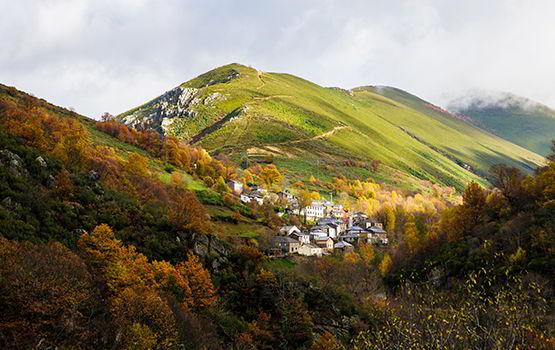
El Bao (Ibias).
Río Eo, Oscos and Terras de Burón Biosphere Reserve
It is an area that stands out especially for the excellent state of preservation of some of the past hydraulic mills, as well as for the remarkable preservation of ethnographic assets, the memory of the countryside and of ancestral activities, handicraft manufacturing, as well as shellfishing in the Eo estuary and sea fishing. The Oscos are a balanced combination of landscape and inhabitants, where the life of the "ferreiros" and their vital footprint is still very present, and where the nature routes linked to water - in the form of rivers, waterfalls or mills - are one of its great attractions.
/documents/39908/67830/meredo.jpg/082b731a-4895-5f3a-2ee0-1aa6a15d642d?t=1674197362009
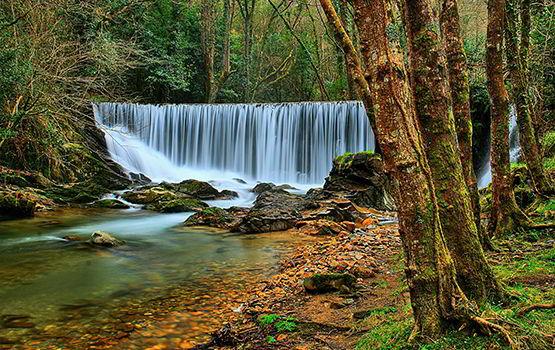
Mazo de Meredo (Vegadeo).
Las Ubiñas-La Mesa Natural Park
It stands out for its contrasts and variety of landscapes. It has picturesque villages such as Bermiego, perched on a hillside and with a mythical and millenary texu; with gorges such as the one formed by the river Val de Sampedro in the area of Cueva Huerta, which is currently the largest chasm in Asturias. And there are also waterfalls as striking as the Xiblu waterfall, or beech forests such as Montegrande and Valgrande. The Prehistoric Park of Teverga, the Ethnographic Museum of Quirós, or the pass of Agüeria are some of the singular attractions of an area where flora and fauna (bears, wolves, capercaillies, golden eagles, etc.) have a truly luxurious refuge.
/documents/39908/67830/ubinas-la-mesa.jpg/147880ec-194b-5202-01cc-c2de04925d5f?t=1674197365797
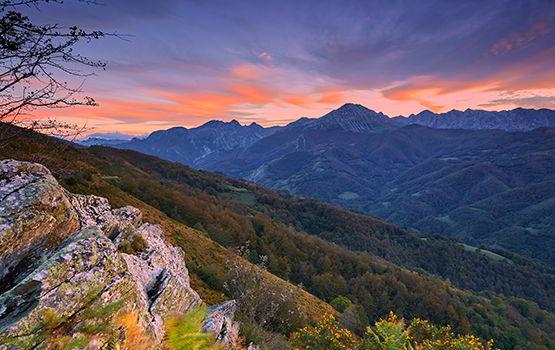
Massif of the Ubiñas-La Mesa (Quirós).
Ponga Nature Reserve
This is the reserve where you will find the famous Peloño forest, a beech forest that becomes a real wonder in autumn. It is also the place where you will find the Arcenorio valley, or the Moandi pass. The place where the rivers Ponga and Sella form grandiose gorges and where there are steep reliefs. The ethnography takes on epic tints with the unique Beyuscan hórreos, and mountain lovers can enjoy such characteristic routes as the Picu Pierzu, the Valle Moru, the Senda del Cartero (Postman's Path) or the Foz de los Andamios (Scaffolding Gorge). In short, a wooded and grassy area. A diverse, beautiful and well-preserved landscape.
/documents/39908/67830/ponga.jpg/3f8b9e63-44a7-41f9-5c9b-adca838ff143?t=1674197363209
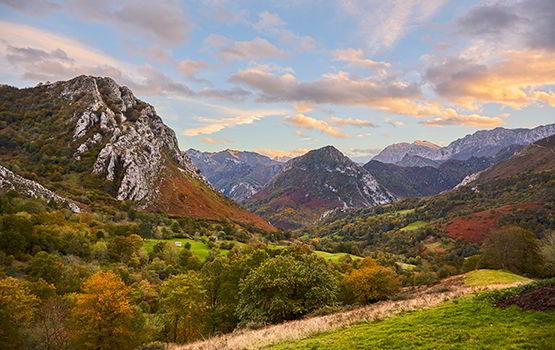
Collada de Moandi (Ponga).



